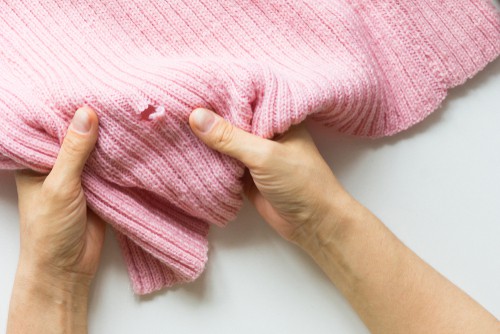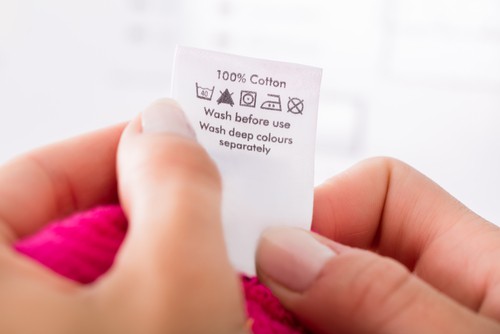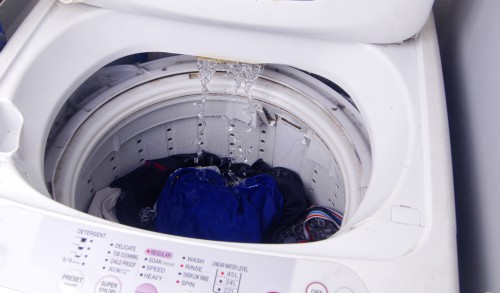Should I Sort and Wash Laundry According to Color?

Should I Sort and Wash Laundry According to Color? There are chances that you might end up trapped with lots of issues with the clothes after they’ve gotten through the laundry room. You might be at fault for it. Chances are that you’re not following the right method to correctly sort out dirty laundry.
For many people properly sorting the laundry is like a mystery so they dump everything together. However, you should also color sort even if you haven’t got one of those color catcher clothes and detergent claiming that it is possible to wash everything in order. You shouldn’t believe anything that you’ve read. Here is where you might start facing issues.
Clothes must be sorted by fabric type, color, washing requirements, and weight. However, many people are doubtful about color whether color sorting should be done or not? Should I sort and wash laundry according to color? If yes, then what would be the right way of doing it?
Color Sorting for Laundry

After the dry cleaning and hand wash clothes have been separated, you must sort the remaining washable laundry through color. Pastels, whites, white, and light gray background prints work in a pile. The dark color clothes – red, black, gray-go, and navy brown would be separated into a different pile.
Is it possible to wash white and Grey together? – How can Accidents Occur?

Following are the typical laundry source accidents:
- Direct Dye Bleed: Sometimes dyes can bleed simply out of a certain garment in the wash – even in lukewarm or cold water.
- Reactive dyes: Such dyes don’t always remain stable while coming into contact with detergents containing bleach, so these can leak onto other wash items. Detergents that contain oxygen bleach might also result in fading colors.
Clothes having deep colors have higher chances of bleeding the dye when they’re washed. For avoiding any damage to other clothing, you must sort laundry according to its color, grouping the medium, light, and darker colors in a separate manner. You should wash the deep-color clothing such as red sweatshirts or indigo jeans all by themselves for the first few washes.
Color Laundry Sorting Process
Here is how you can sort washing machine laundry according to colors and ensure that the process runs smooth and error-free:
Sorting for White

It means fully white clothing – These clothes should not contain any labels, patterns, or designs. Such clothes can get bleached through chlorine bleach as they do not contain any colors and won’t get damaged when being washed. Make sure to wash in hot water to kill germs and get bright fabric. Hot water doesn’t fade white color as it does to others. Use high heat for drying these.
Lighter Colors

Put the white items with designs or labels in the container – you must include the pastel colors such as light green, light yellow, yellow and pink. Then you use warm water for washing these items. Avoid washing these clothes through hot water, as it results in fading of colors. Use medium heat for drying these clothes. Lighter colors like navy blue and khakis can also be added to this hamper.
Darker Colors

It includes black clothes, blue, purple and gray. This includes orange and red (unless you wish to separate bright from dark colors). Wash these using cold water, as the colder temperatures are gentle on fabric. In this way, the colors won’t easily fade! You must dry these in low heat.
For Denim

Denim bleeds in initial wash cycles. You can wash denim similar to jean jackets, jeans, and other clothes for ensuring that no dye transfer occurs. Put all denim clothes together and wash these in warm to cold water. While drying, dry these with medium heat. Hot temperatures can fade and wear down denim.
Wash the jeans inside out to prevention of color from fading. You won’t want the dark-wash chic jeans to turn light-wash ones only after some washes! For preserving the denim cloth color, hand washes and air-dry them.
Sorting Clothes through Fabric Type

Wash heavy items such as towels separately through lightweight clothes for prevention of damage and abrasion to fine fabrics. For this reason, separate clothing with buttons and zippers from lingerie and knits. When any cloth sheds lint, you need to avoid mixing it with microfiber, corduroy, or other fabrics attracting links while washing in the washing machine.
Another reason for separating laundry from a certain type of fabric is as heavy items require longer drying compared to light ones. Through drying these together, lighter ones get over-dried, which can stress the fibers, and the heavy ones are also left out damp.
Select the Proper Laundry Basket

Have a partitioned basket to sort laundry as it saves more time while sorting all of it later. If someone in the household places anything in the wrong section, you need to check the labels of the garments for washing recommendations of the manufacturer.
When you’re in doubt, you can test any unnecessary cloth or item by applying hot water to an inconspicuous part, (for example inside of hem) and press it with warm iron between two cloth pieces.
Consider the Label

If you’re familiar with the conventional laundry routine, you’ll most probably need to indulge in this step each time whenever you’re using the washing machine. However, if you teach a kid the right ways of doing laundry, it would be a vital step. Always carefully read the label on each hamper item.
The label tells you whether it is possible to machine wash an item or not, the ideal temperature, and the ways for drying the fabric. All clothes with the “wash separately” label or “hand wash” should be kept in a separate pile.
Should I Sort and Wash Laundry According to Color? – Conclusion

So, should I sort and wash laundry according to color? Because of all the stated reasons, it is vital to know the exact colors that you can wash together. Make sure to always wash the whites before or after for avoiding any possibility of color transfer. For example, the light grey colored clothes can be safely washed with lighter colors and you must put the dark grey ones with dark piles.
Anyone who is a beginner at doing laundry must also check for a tag saying “dry clean only”. Such clothes should be stored in another bag and should be handled by a dry cleaner. After a few washes, you’ll learn that many items with the dry clean label can also be washed by hand. Clothes that are too dirty or soiled should be separated as they can transfer strong odors to other fabrics as well.





